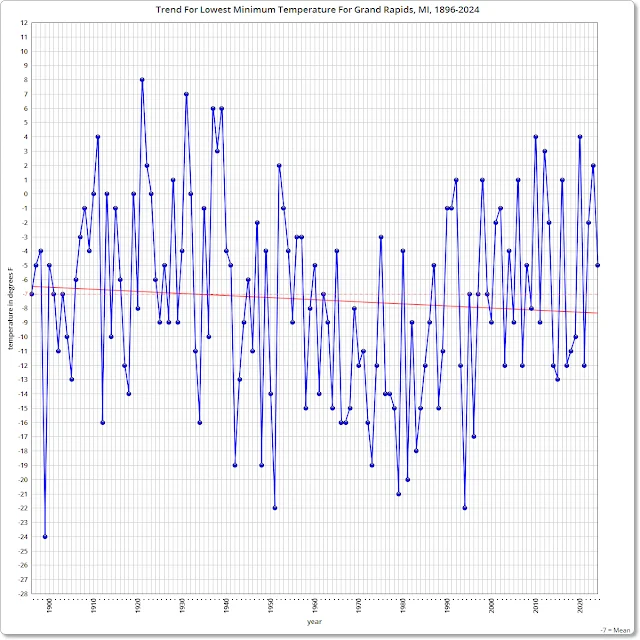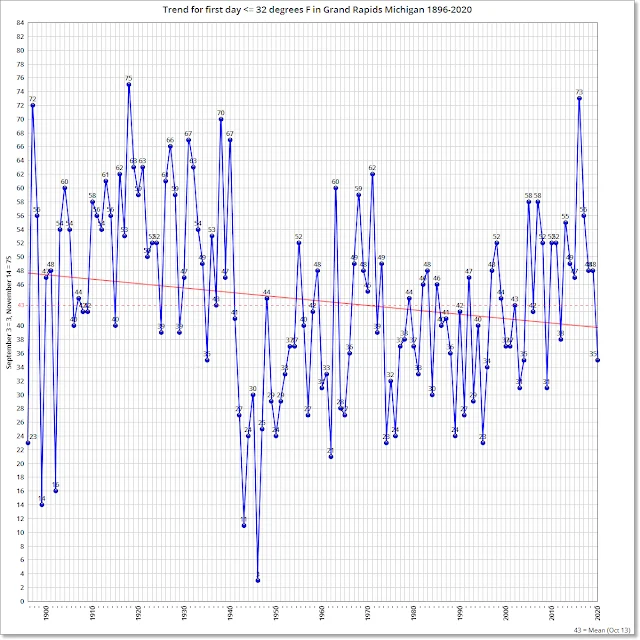June 2021 to date is the 14th rainiest month in Grand Rapids, MI, since 1892:
Jun 1892: 13.22
Sep 1986: 11.85
Apr 2013: 11.10
May 2001: 10.01
Oct 2017: 9.69
May 2000: 9.59
Sep 2008: 9.54
Sep 1981: 9.52
May 2004: 9.29
Sep 1961: 9.15
Jul 1992: 8.83
Aug 1987: 8.46
Jul 1950: 8.42
Jun 1-26, 2021: 8.40
Oct 1954: 8.32
Apr 1909: 8.29
May 1981: 8.29
Jun 1967: 8.21
Sep 1993: 8.20
Sep 1915: 8.11
Jul 1994: 8.07
Jun 2010: 8.04
Jun 1928: 8.03.
Among the 23 months with 8 inches of rain or more in Grand Rapids, MI, since 1892, June 24-26, 2021 stands out as one of just five 2-3 consecutive day rain events with 5.5 inches or more:
May 10-11, 1981: 6.51 inches of rain
Sep 9-11, 1986: 6.43
Jun 24-26, 2021: 6.17
May 14-16, 2001: 5.97
Jul 5-7, 1994: 5.54.
74% of the 23 months with 8 inches of rain or more in GR occurred after 1960, consistent with the higher rainfall trend generally in the graph below.
The June 2021 event caused a run on portable submersible pumps needed by homeowners to evacuate pooling water in low areas and basements due to saturated ground. Flood warnings remain in effect for the area through Monday.
Even so, Grand Rapids is still running over 2 inches behind on mean rainfall year-to-date.
June 26, 2021 ranks 7th for daily maximum rainfall on a single day in June since 1892 at 2.81 inches.
The most rain ever to fall on a single day in Grand Rapids is 4.22 inches, occurring on June 5, 1905 and again on August 19, 1939. Those extreme events are associated with the hotter, dryer pre-1960 half of the graph.
Mean annual daily maximum precipitation in GR is 2.27 inches, with June ranking the highest month at 1.29, followed by September at 1.26.
































